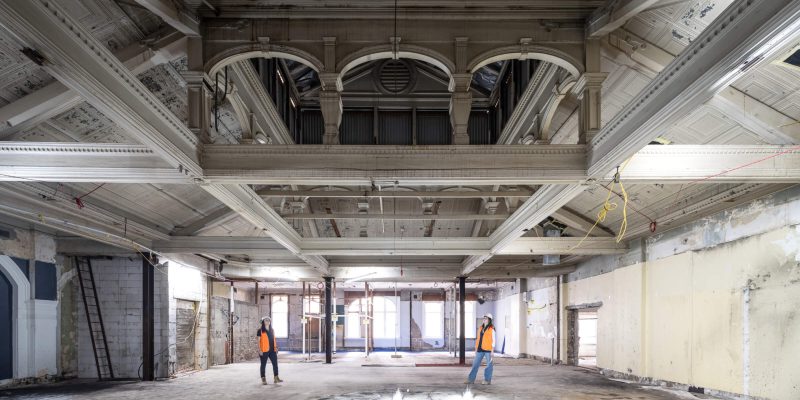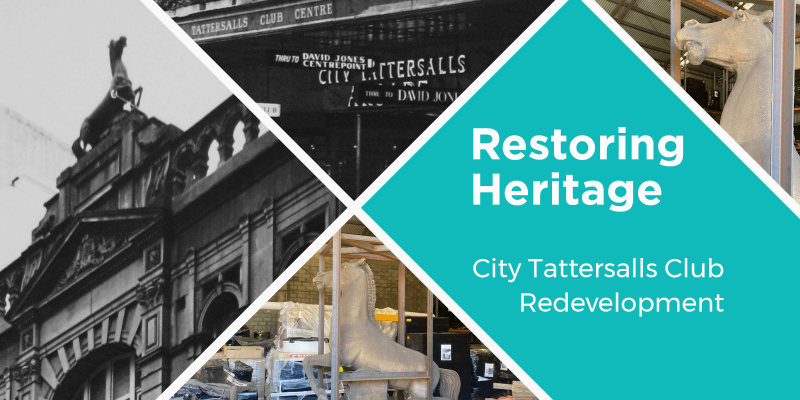Balancing the use of heritage assets with the needs for restoration and preservation protects the history, culture and identity of our cities.
City Tattersalls Club is a landmark heritage building within Sydney’s CBD.As part of the Redevelopment package of works, major conservation and restoration is underway at:
- 194 Pitt Street (former Symonds building) – circa 1914
- 198-200 Pitt Street (East and West) City Tattersalls Club – circa 1924
- 202 – 204 Pitt Street (East and West) (former Tattersalls Club) – circa 1890
194 Pitt Street
The former Symonds Building has aesthetic and heritage significance, exemplifying the Federation Free style of building that contributes to the commercial streetscape of Pitt Street. The building’s design is associated with architect Gordon McKinnon.
Formerly part of the family business Symonds’ Furnishing Ltd., and then occupied as Merivale & Mr John for almost three decades – the first specialty fashion boutique in Australia.
198 – 200 Pitt Street
The City Tattersalls Club was purpose-built in 1924, and has been in use for almost a century. With a rich history in Australia’s horse racing culture, the building is associated with architect, E.L. Thompson.
The building’s Club Bar is a rare, largely intact example of an art deco bar interior by Sidney Warden. The Lower Bar served as the Club’s ‘settling room’ – on settling day, it was crowded with bookmakers brandishing large wads of banknotes to settle with each other. The Vault Room (attached to the rear of the Lower Bar) contains secure vaults which were used to store Bookies takings. These vaults will be restored and displayed within the club.
202 – 204 Pitt Street
The former Tattersalls Club at 202 – 204 Pitt was purpose-built for the Tattersalls Club in 1891 (who operated it for 37 years). It was then purchased by the City Tattersalls Club in 1975.
The building’s design is associated with Sheerin & Hennessy, and Robertson & Marks who undertook alterations and additions – most notably the rear ballroom (1914). The Corinthian Room (formerly the Saloon Room circa 1891) and Billiard Room (1914) are highly significant spaces, and will be restored through revitalisation works.
Sitting atop 202 Pitt Street is an impressive horse sculpture, known as the rampant horse. 2500mm tall x 2500mm long x 665mm deep and carved out of sandstone, the original feature has been a strong symbol for the club, given its bookmarking and horse racing roots. Now an important part of their legacy, our team of experts are working to restore the original sculpture and develop a replica. Learn more here.
Heritage report credit: Fiona Binns, Urbis.





